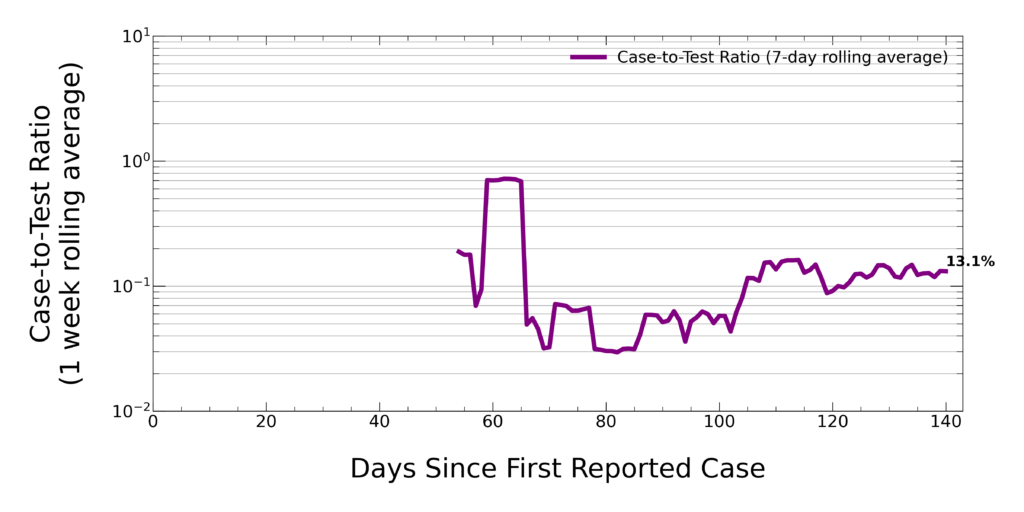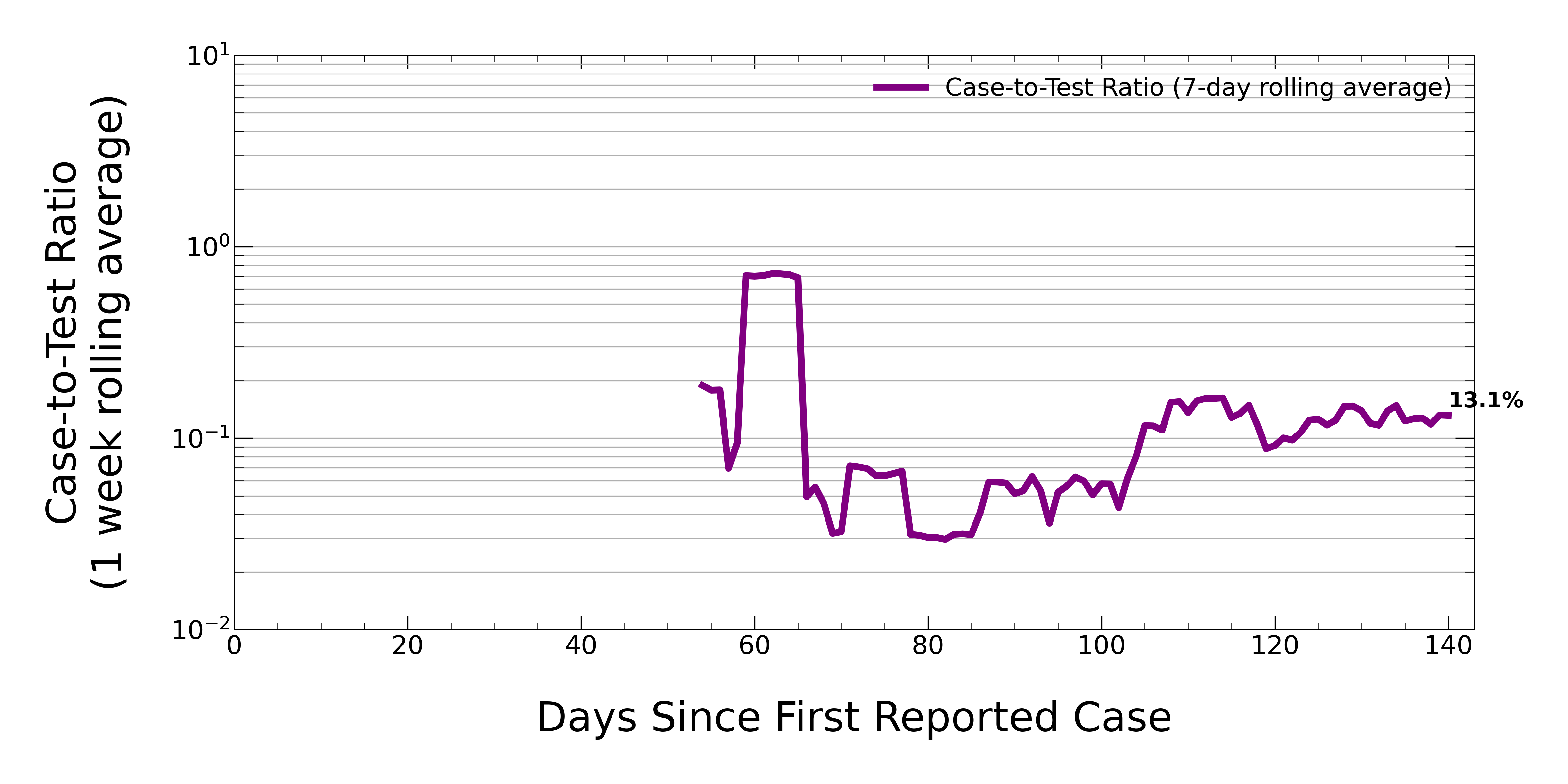Redfield was then asked for a definition of “hot spots.” He said it would include places where more than 5 percent of coronavirus tests come back positive. Looking county by county, he said “the majority of the nation” is not a hot spot.
“CDC director concedes schools in ‘hot spots’ face tougher call on reopening”. The Washington Post. July 25, 2020.
If you look at the numbers in Collin County – the number of new coronavirus cases per day – you might be convinced that something good is happening. Back on about day 128 after the county started reporting COVID-19 data, we hit the single-day high of new cases. We had just over 200 new cases of COVID-19 in a single day. This came around the average peak daily new cases.
Since day 128, we’ve dropped a little in the new cases count; at worst, we’ve remained generally level. You might be tempted to think things are better.
In reality, it’s not that simple. The case counts are dropping because the amount of testing for COVID-19 has declined. Just as case counts gently dropped off, so did the total number of COVID-19 tests. But something stayed constant: the rate of positive tests.

While the CDC’s advice may have recently been compromised by the President, some clear and honest truths still slip out. Redfield understands a “hot spot” to be a place with a >5% positivity rate. Like all the counties across the DFW metroplex, we are a hot spot.




